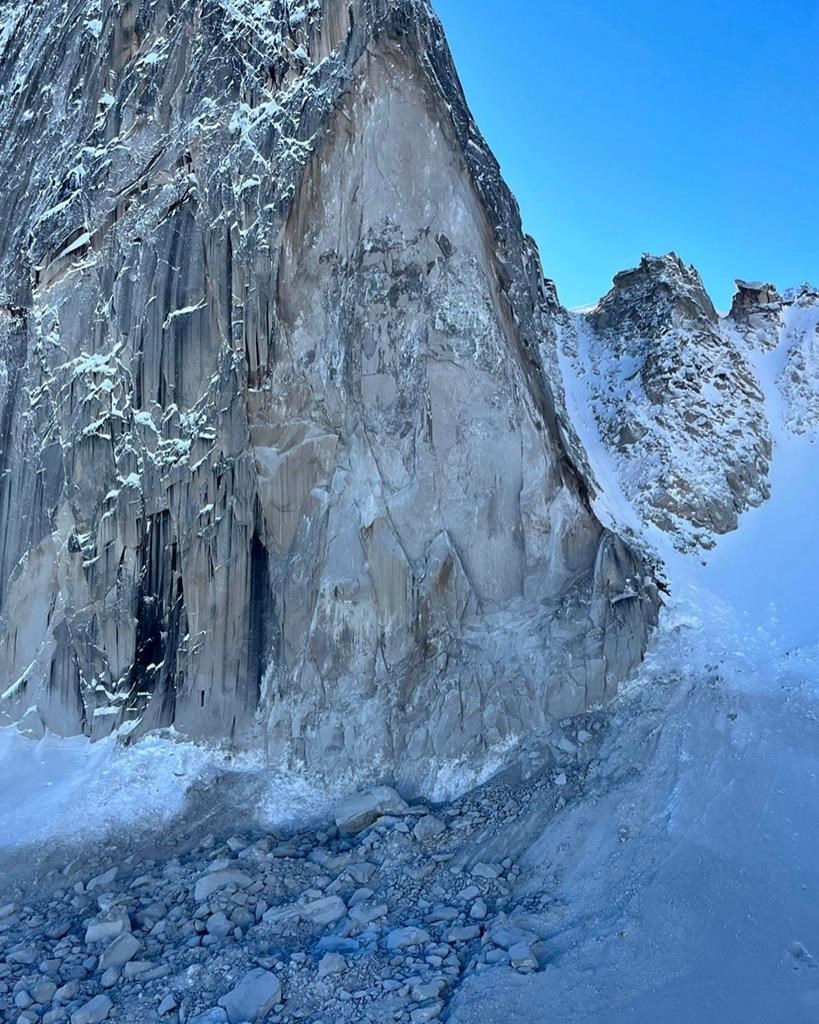INVERMERE, B.C. — Mountain guide James Madden was flying over Snowpatch Spire in Bugaboo Provincial Park last week surveying weather conditions when he saw dust clouds.
He then snapped photos of a huge rockfall on the northeast side of the iconic peak in southeast British Columbia, which has shocked the climbing community.
"It was a surprise," he said. "To see something that large is quite surprising."
Madden, who has used the park for nearly 20 years, said the loose rocks left behind will be a hazard for anyone walking in the area for years to come.
"From the climbing industry, it's going to change the Bugaboos forever," he said.
Climbers from around the world travel to the provincial park in the Purcell Mountains every year. Snowpatch Spire, at more than 3,000 metres tall, is considered the centrepiece of the Bugaboos mountain range and is a well-known granite alpine climbing area.
Tim McAllister, who also guides in the park, said he felt dismay when he learned of the rockfall.
"It was such a large event that demolished a very famous and beautiful landmark," he said. "It's scarred Snowpatch Spire forever."
McAllister said while dozens of climbing routes on the west side of the spire are still intact, it was a "special chunk" that fell off. He said his friend Will Stanhope, a climber and mountain guide, free climbed the Tom Egan Memorial Route with partner Matt Segal, which is now gone.
"It became one of the great ascents of the year, if not the decade," he said.
Marc Piche, who has co-authored several guidebooks on the Bugaboos, said Snowpatch Spire was one of the last spires to be climbed in the mountain range.
Some of the routes that fell off were "world class," including one deemed one of the world's hardest alpine rock climbs, he said.
"It took a lot of history with it."
Piche said the rockfall was shocking, but not totally surprising.
"The Bugaboos have kind of got a long history of pretty major rockfalls," he said. "It just seems like it's inevitable that there will always be big rockfall events up in the mountains, in particular in the Bugaboos."
Drew Brayshaw, a climber and senior hydrologist and geoscientist with Statlu Environmental Consulting, said the rockfall affected about a dozen climbs.
He estimates it was roughly 30,000 to 50,000 cubic metres in size.
While that's large, he said, it pales in comparison to other recent rockfalls in British Columbia.
Two landslides on Joffre Peak in Joffre Lakes Provincial Park in 2020 had a combined volume of five million cubic metres, says an analysis published in the Journal of the International Consortium on Landslides.
In general, Brayshaw said mountain permafrost is thawing because of climate change.
There have been "major temperature swings" in the region, creating cracks in granite that expand as water freezes, causing portions of rock to break off, he added.
"The frequency of mountain landslides is increasing and it's directly related to climate change and thawing alpine permafrost," he said.
This report by The Canadian Press was first published Dec. 28, 2022.
— By Emily Blake in Yellowknife
This story was produced with the financial assistance of the Meta and Canadian Press News Fellowship.
The Canadian Press


